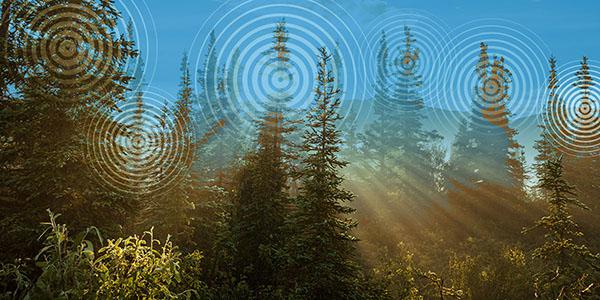You Can't Hear the Forest for the Trees
The next generation of battlefield sensors may be truly organic in nature. Scientists at the Army Research Laboratory (ARL) are experimenting with using natural plant life as self-powered sensors in a future battlefield surveillance network.
Their exotic work builds on research developed three years ago by Swedish scientists. Those researchers were able to turn a living rose into an electronic circuit. And, they were able to accomplish this without killing the flower. U.S. Army scientists say the next step in this research is to turn this organic circuit into a sensor that would be networked on the battlefield.
This living sensor would be self-powered. Stephen Russell, chief of the ARL’s Battlefield Information Processing Branch, notes that research last year turned a living plant into a battery. So, even the support elements that empower electronic devices can have a broad presence in these nontraditional sources.
“The fear that the trees are listening, which comes out of storybooks as old as a hundred years, is the reality now,” he offers. “The trees are not only listening, but they also are powering themselves.”
Russell explains that this research is part of the ARL’s work in the Internet of Battlefield Things (IoBT) Collaborative Research Alliance. This effort explores connected disciplines such as sensors, small actuators and network devices that can be integrated on the battlefield. Russell describes IoBT research as a convergence of cyber, sensing, mechanical and network technologies. He states that the ARL is striving to bring interdisciplinary research in IoBT technologies to fruition.
Adding artificial intelligence and machine learning can provide a convergence leading to smart trees with self-awareness, their own internal power sources and the ability to listen. “This really changes the battlespace, the way that the Army operates,” he warrants. “It really changes command and control in a really big way.”
The laboratory’s research on the IoBT falls into two categories. One tends to focus on near-term advances that could see their way to the battlefield in a few years. These would build on relatively known technologies and capabilities. The other research aims for the longer term and can involve truly ground-breaking advances, such as forest surveillance.
One key research area is device information discovery, composition and adaptation. Russell notes that in the IoBT, networks will be highly dynamic. For example, if a rose becomes an antenna that is powered by other roses, the network must discover that capability and ascertain its utility. Then, the network must compose the rose and other assets into a networked web that it can use. And, it must adapt this dynamic information network to suit rapidly changing battlefield operations. “A single rose is a single rose, but a forest is very different,” he offers.
The IoBT research effort could achieve more than just a new type of sensor system. Russell elaborates that a successful outcome “will significantly advance our understanding of how self-aware systems operate, how highly complex systems provide insight into what they’re doing.”
(Additional information on the ARL’s IoBT effort, including other technologies and capabilities, can be found in the March 2018 issue of SIGNAL Magazine, available in print and online March 1.)





Comments